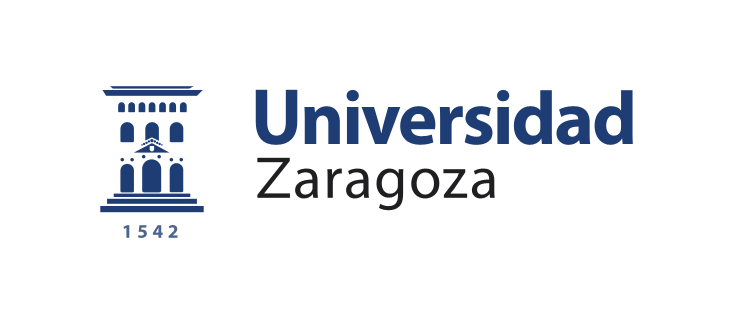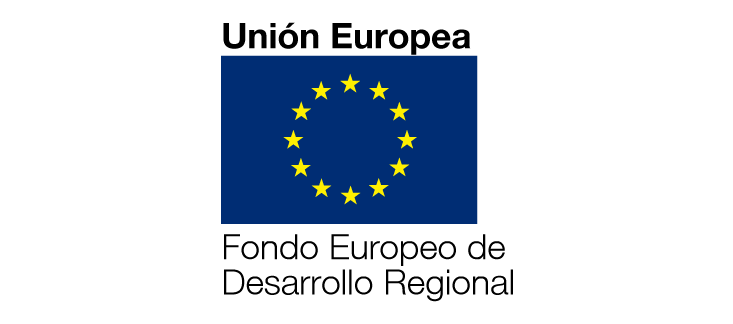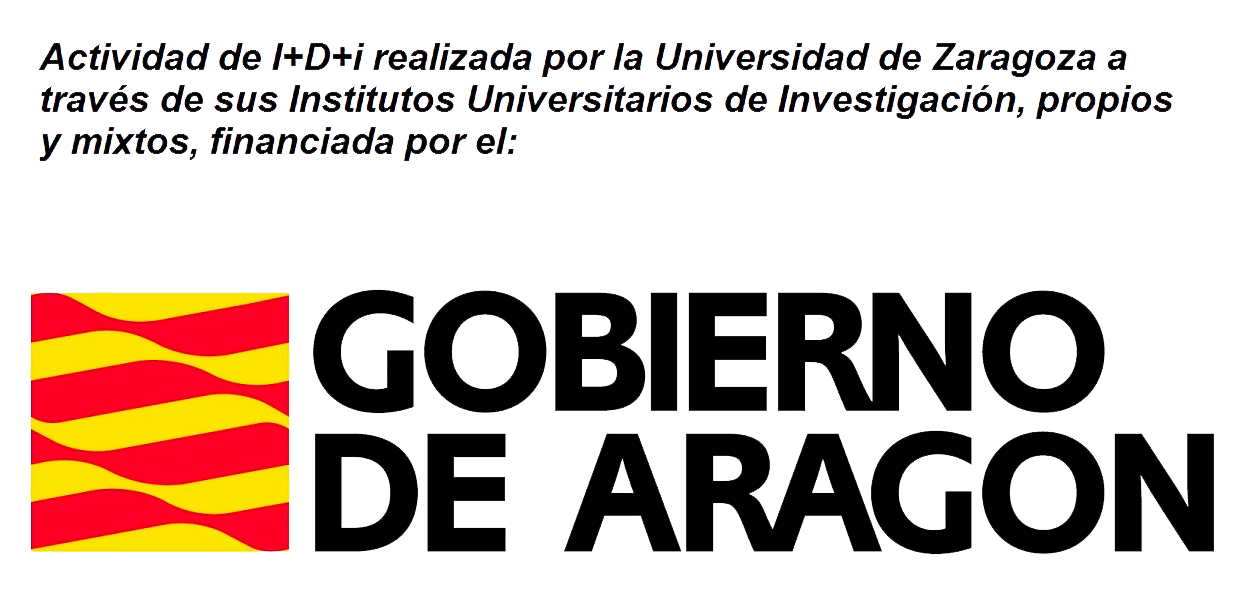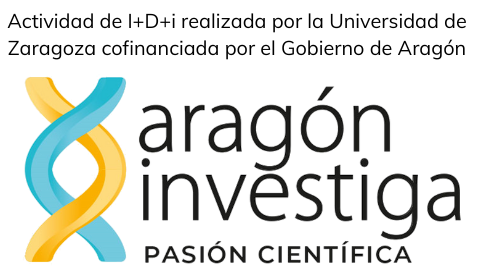Access.
The experimental and computational resources and infrastructures (LACRIMA and CESAR) located at the Institute BIFI are available to authorized external users.
Access to the building is controlled electronically through access cards. External users will be informed about general and laboratory-specific safety measures and risk-prevention guidelines, before and after arrival.
Depending on the length of the stay, users might need to take a short safety course.
External users must be accompanied and supervised by a BIFI researcher at any time.
External users must contact Adrian Velazquez-Campoy (adrianvc@unizar.es) or David Iñiguez (david.iniguez@bifi.es), main contacts for the experimental and computational facilities,respectively, in order to get/provide required information. In addition, users may contact the
Secretary at BIFI (secretaria@bifi.es) for further information.
External access for MOSBRI
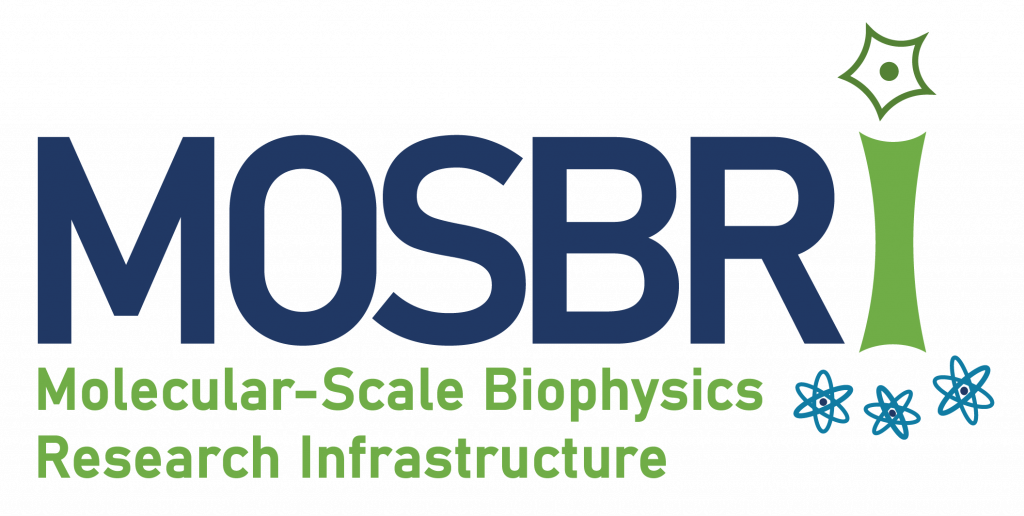 The MOlecular-Scale Biophysics Research Infrastructure (MOSBRI) enables ambitious integrative multi-technological studies of biological systems at the crucial intermediate level between atomic-resolution structural descriptions and cellular-scale observations.
The MOlecular-Scale Biophysics Research Infrastructure (MOSBRI) enables ambitious integrative multi-technological studies of biological systems at the crucial intermediate level between atomic-resolution structural descriptions and cellular-scale observations.
Its consortium of 2 companies and 13 academic centres of excellence from 11 countries gathers a wide complementary panel of cutting-edge instrumentation and expertise, leveraging barriers that currently hinder the optimal exploitation of molecular-scale biophysical approaches in the fields of biomedicine, biotechnology, biomaterials and beyond. MOSBRI provides European academic and industrial researchers with a one-stop shop Trans-National Access to the latest technological developments in advanced spectroscopies, hydrodynamics, thermodynamics, real-time kinetics and single molecule approaches.
Instruments / methodologies offered through TNA
Protein Stability and Interactions: BIFI-LACRIMA offers equipment for elucidating and assessing protein stability (conformational landscape, equilibrium and kinetic stability of proteins an biologics) and interactions (functional landscape, thermodynamic interaction parameters, cooperative phenomena and allostery), from in vitro assays with isolated protein to cell-based assays:
- Calorimetry: VP-ITC, Auto-iTC200, VP-DSC, and Auto-PEAQ-DSC (MicroCal, Malvern-Panalytical)
- Surface plasmon resonance: Biacore T200 (GE Healthcare)
- Microscale thermophoresis: Monolith NT.115Pico (NanoTemper)
- Spectroscopy: Chirascan spectropolarimeter (Applied Photophysics), Cary Eclipse fluorimeter (Agilent), NanoStar Dynapro DLS y DynaPro Plate Reader III (Wyatt Technology)
- Multimode plate readers: FluoDia T70 (PTI), Synergy HT (BioTek), Mx3005p (Agilent), CLARIOStar and FLUOStar (BMG Labtech)
- Fluorescence microscopy: DMI 6000B (Leica)
- Single molecule spectroscopy: MicroTime 200 (PicoQuant)
Contact: Adrián Velázquez-Campoy (adrianvc@unizar.es)
- Calorimetry: VP-ITC, Auto-iTC200, VP-DSC, and Auto-PEAQ-DSC (MicroCal, Malvern-Panalytical)
What information can you get from this technique?
- How stable is my protein?
- Is my protein folded, partially folded or intrinsically unfolded?
- What is the shelf-life of a biologic?
- How strong is a protein-ligand interaction?
- What are the intermolecular driving forces underlying a certain protein-ligand interaction?
- What is the concentration of active protein?
- What is the influence of other biomolecules on a given protein interaction?
It allows gathering structural information of proteins (DSC): degree and cooperativity of folding, structural stability through thermal denaturation, self-association of proteins, kinetic stability of proteins… Impact of experimental conditions (extrinsic variables) and protein mutations (intrinsic variables) on this structural information.
It allows determining functional information of proteins (ITC): determination of full thermodynamic characterization of protein-protein and protein-ligand interactions (binding affinity, binding enthalpy and entropy), assessment of allosteric interactions (influence of other biomolecules on a given interaction) and cooperativity of binding. Impact of experimental conditions (extrinsic variables) and protein mutations (intrinsic variables) on this functional information.
- Surface plasmon resonance: Biacore T200 (GE Healthcare)
What information can you get from this technique?
- How fast is a protein-ligand interaction?
- What is the residence time for a ligand on a given protein?
- How strong is a protein-ligand interaction?
- What is the influence of other biomolecules on a given protein interaction?
It allows determining functional information of proteins: determination of kinetic association and dissociation rate constants and binding affinity for protein-protein and protein-ligand interactions, assessment of allosteric interactions (influence of other biomolecules on a given interaction) and cooperativity of binding. Impact of experimental conditions (extrinsic variables) and protein mutations (intrinsic variables) on this functional information.
- Microscale thermophoresis: Monolith NT.115Pico (NanoTemper)
What information can you get from this technique?
- How strong is a protein-ligand interaction?
- What is the influence of other biomolecules on a given protein interaction?
It allows determining functional information of proteins: determination of binding affinity for protein-protein and protein-ligand interactions. Impact of experimental conditions (extrinsic variables) and protein mutations (intrinsic variables) on this functional information.
- Spectroscopy: Chirascan spectropolarimeter (Applied Photophysics), Cary Eclipse fluorimeter (Agilent), NanoStar DynaPro DLS and DynaPro Plate Reader III (Wyatt Technology)
What information can you get from this technique?
- How stable is my protein?
- Is my protein folded, partially folded or intrinsically unfolded?
- How strong is a protein-ligand interaction?
- What are the intermolecular driving forces underlying a certain protein-ligand interaction?
- What is the concentration of active protein?
- What is the influence of other biomolecules on a given protein conformation or interaction?
- How large is my protein in solution?
- Is my protein oligomeric?
- Is my protein aggregating?
It allows gathering structural information of proteins: degree and cooperativity of folding and secondary structure motifs content, structural stability through thermal and chemical denaturation, molecular size and diffusion coefficient, self-association and aggregation of proteins… Impact of experimental conditions and interacting ligands (extrinsic variables) and protein mutations (intrinsic variables) on this structural information.
It allows determining functional information of proteins: determination of binding affinity for protein-protein and protein-ligand interactions, assessment of allosteric interactions (influence of other biomolecules on a given interaction) and cooperativity of binding. Impact of experimental conditions and interacting ligands (extrinsic variables) and protein mutations (intrinsic variables) on this functional information.
- Multimode plate readers: FluoDia T70 (PTI), Synergy HT (BioTek), Mx3005p (Agilent), CLARIOStar and FLUOStar (BMG Labtech)
What information can you get from this technique?
- How stable is my protein?
- Is my protein folded, partially folded or intrinsically unfolded?
- What is the influence of another biomolecules on a given protein conformation or interaction?
- Is my protein oligomeric?
- Which are the optimal experimental conditions for my protein?
- Which is the optimal construct for my protein?
- Which specific ligands would interact with my protein?
- Which are the enzymatic parameters for my enzyme?
- Is a certain compound cytotoxic?
It allows gathering structural information of proteins: structural stability through thermal and chemical denaturation, self-association of proteins… Impact of experimental conditions and interacting ligands (extrinsic variables) and protein mutations (intrinsic variables) on this structural information.
It allows screening for optimal experimental conditions or optimal protein constructs (stability, aggregation, solubility) for proteins.
It allows identifying specific ligands for proteins.
It allows determining enzymatic parameters in direct or coupled reactions.
It allows assessing cytotoxicity parameters for chemical compounds on specific cell lines.
- Fluorescence microscopy: DMI 6000B (Leica)
What information can you get from this technique?
- Is my protein inducing cellular changes (growth arrest, death, cell proliferation, cell differentiation…)?
- Is my protein being internalized or trafficked inside the cells?
- Is my protein interacting with other proteins or cellular structures, and under which physiological conditions?
It allows assessing cellular morphology and metabolic state for compound cytotoxicity evaluation.
It allows exploring cellular internalization and subcellular localization of proteins.
It allows observing protein-protein and protein-ligand interactions in cells.
Cells can be processed for microscopy and proteins localized by immunocytochemistry in fixed (dead) cells. Alternatively, live cells can also be analysed and changes (morphology, cell division, cell growth, cell interactions, intracellular localization of proteins and/or ligands…) can be monitored in real time.
- Single molecule spectroscopy: MicroTime 200 (PicoQuant)
What information can you get from this technique?
- Is my protein sample homogeneous?
- How variable is my protein in solution?
- How is its conformational dynamics?
- Are there low-populated species?
- What is the diffusion of my protein/protein species in solution?
- How strong is a given protein interaction?
It allows investigating the properties and behaviour of individual molecules, in contrast to ensemble or bulk techniques which provide the average characteristics of all the molecules in the sample. This technique, therefore, assesses protein sample heterogeneity, and allows to measure structural parameters such as compactness, size and distances between different regions in the different types of macromolecules in the sample.
It allows exploring conformational dynamics, identify and quantify low-populated species.
It allows determining binding affinities for macromolecular complexes.
Contact: Adrián Velázquez-Campoy (adrianvc@unizar.es)
- Calorimetry: VP-ITC, Auto-iTC200, VP-DSC, and Auto-PEAQ-DSC (MicroCal, Malvern-Panalytical)
What are the samples requirements?
- Pure samples are required.
- For a typical DSC assay, you might need 0.5 mL of 20 μM protein solution.
- For a typical ITC assay, you might need 0.5 mL of 10-20 μM protein solution and 0.15 mL of 100-200 μM of ligand solution.
What other specific considerations are relevant?
- It is important that protein and ligand solutions are perfectly matched regarding buffer composition.
- Avoid large concentration of solubilizing agents (e.g., glycerol, DMSO) and reducing agents (e.g., DTT, TCEP).
- Buffers with low ionization enthalpy are preferred for DSC.
- Please, contact for specific details on the experimental protocol.
- Contact person: Adrian Velazquez-Campoy (adrianvc@unizar.es)
- Surface plasmon resonance: Biacore T200 (GE Healthcare)
What are the samples requirements?
- Pure samples are required.
- The attachment of the macromolecule of study to a functionalized surface (SPR chip) is required.
What other specific considerations are relevant?
- Please, contact for specific details on the experimental protocol.
- Contact person: Adrian Velazquez-Campoy (adrianvc@unizar.es)
- Microscale thermophoresis: Monolith NT.115Pico (NanoTemper)
What are the samples requirements?
- Pure samples are required.
- The attachment of an appropriate fluorophore probe to the macromolecule of study is required.
What other specific considerations are relevant?
- Please, contact for specific details on the experimental protocol.
- Contact person: Adrian Velazquez-Campoy (adrianvc@unizar.es)
- Spectroscopy: Chirascan spectropolarimeter (Applied Photophysics), Cary Eclipse fluorimeter (Agilent), NanoStar DynaPro DLS and DynaPro Plate Reader III (Wyatt Technology)
What are the samples requirements?
- Pure samples are required.
- For a typical assay you might need as much as 0.8 mL of 10 μM protein solution (e.g., near-UV circular dichroism measurement), and as less as 0.05 mL of 5 μM protein solution (e.g., DLS measurement).
What other specific considerations are relevant?
- Please, contact for specific details on the experimental protocol.
- Contact person: Olga Abian (oabifra@unizar.es)
- Multimode plate readers: FluoDia T70 (PTI), Synergy HT (BioTek), Mx3005p (Agilent), CLARIOStar and FLUOStar (BMG Labtech)
What are the samples requirements?
- Pure samples are required (for proteins and chemical compounds).
- You may need specific cell lines in order to observe cell-specific effects.
- For a typical assay you might need as less as 0.1 mL of 0.2 μM protein solution (e.g., enzymatic reaction) or as much as 0.1 mL of 2 μM protein solution (e.g., differential scanning fluorimetry).
What other specific considerations are relevant?
- Please, contact for specific details on the experimental protocol and amount of sample required.
- Contact person: Nunilo Cremades (ncc@unizar.es), Olga Abian (oabifra@unizar.es)
- Fluorescence microscopy: DMI 6000B (Leica)
What are the samples requirements?
- Pure samples are required (for proteins and chemical compounds).
- You may need specific cell lines in order to observe cell-specific effects.
- Proteins can be introduced into cells, but usually cells are transiently transfected with DNA constructs that code for the desired protein, either alone of fused to fluorescent proteins.
- Specific stable cell lines expressing the protein of interest can also be generated and analysed.
What other specific considerations are relevant?
- The attachment of an appropriate fluorophore probe to the macromolecule of study is required for live cell experiments.
- For immunocytochemistry, specific antibodies are required.
- Fluorescently labelled ligands can also be used.
- Please, contact for specific details on the experimental protocol.
- Contact person: Jose Alberto Carrodeguas (carrode@unizar.es)
- Single molecule spectroscopy: MicroTime 200 (PicoQuant)
What are the samples requirements?
- Highly pure samples are required.
- Standard measurements are performed with 50 μL of 200 pM labelled protein for single-molecule experiments or 1 nM for fluorescence correlation spectroscopy measurements.
What other specific considerations are relevant?
- The attachment of an appropriate fluorophore probe to the macromolecule of study is required.
- Please, contact for specific details on the experimental protocol
- Contact person: Nunilo Cremades (ncc@unizar.es)
Contact: Adrián Velázquez-Campoy (adrianvc@unizar.es)
BIFI and Lab access:
In order to access the BIFI Institute there are some aspects that you have to take in consideration before:
Lab Access (contact: Beatriz Antolí, bantoli@unizar.es)
- The identification card will be issued with personal information and provided the first day of the stay. It is a personal and non-transferable card that must be returned at the end of the stay
Lab Security (contact: Sonia Vega, svega@bifi.es)
- You will be provided with Risk Prevention & Biosafety information upon your arrival. Depending on the duration of your stay and the equipment/infrastructure to be employed, you might have to pass a course before entering the facilities.
Practical information: (contact: Beatriz Antolí, bantoli@unizar.es)
- Accommodation
Once you have booked your travel to Zaragoza for your assigned TNA time, you may book yourself the hotel stay, or you may contact Beatriz Antoli to book the accommodation for your stay in Zaragoza.
Hotels available in the city with prices arranged with the University of Zaragoza
HABITAT CENTER LOS GIRASOLES ****
HOTEL EUROSTARS PLAZA DELICIAS ***
- Traveling to Zaragoza
BIFI Institute is located at the new I+D Building in the «Río Ebro» Campus (better known to taxi drivers as the Escuela de Ingenieros, or the Actur Rey Fernando bus stop) of the University of Zaragoza in the north of the city. The I+D (investigacion y Desarollo) building is at the Nothern end of the campus (i. e. further away from the city), it has red lateral walls and is located next a large parking for cars.
To Zaragoza
You can arrive in Zaragoza by plane, train, bus and car. If you come from abroad and you land at either Madrid or Barcelona airports, then the train or the bus are usually the best options for the last part of the trip to Zaragoza.
From Madrid Barajas airport, you have to reach the Atocha train station from where the high-speed trains depart (AVE or Alta Velocidad): take the metro airport line (L8, 2 euros) to terminus (metro station named «Nuevos Ministerios») where you can change and take a local train (Cercanias, 1,35 euros) to Puerta de Atocha train station: all Cercanias train lines are in the direction north-south and all southbound trains go to Atocha which is two stops away. Tickets can be purchased from automatic machines.
There is a new direct train line (Cercanias C-1 line) connecting terminal 4 of Barajas airport to Atocha station: it takes 26 minutes and run every half an hour. This line is advantageous if you are landing to terminal 4 (T4): although there are buses connecting terminals, it might be faster to take the metro and change at Nuevos Ministerios if you are landing at terminals 1,2 or 3.
AVE trains run every hour or so and take a bit more than one hour to reach Zaragoza: they necessitate seat reservation like the French TGV. We advise you to book the ticket in advance as trains might be full at peak hours and, at times, there might be queues and a long waiting time. Consult the Renfe web site for more information (prices, train schedule…). Note that buying from the internet might be impossible for non-Spanish credit cards. Tickets can however be purchased from travel agents (SNCF and DB are selling Renfe tickets for example).
The travel time from Barajas airport to the Atocha station is approximately 45 minutes. It is generally safe to book a seat in a train leaving two hours after landing time. In case of late plane arrival, you loose the reservation and will then have to go to ask help to the counter «Atencion al cliente» where Renfe employees can speak in English: they will explain how to rebook another seat in the next possible train.
See also the web page of the bus company which runs a long-distance coach service to Zaragoza from T4 terminal. Travel time is less than 4 hours.
From the Barcelona El Prat airport, you have to reach the train station Barcelona Sants, from where the AVE will depart. Buses are connecting the station from both terminal T1 and T2. What has been explained for the Madrid airport-train station connection timings is also applicable if you come through Barcelona.
Landing in Zaragoza airport
The Zaragoza airport is situated 9 km from the city. At present, there are regular flights to Charleroi (Brussels-south), Frankfurt, Rome, London, Milan and Lisbon and domestic flights to Sevilla. Connections from the airport to the city are by bus and taxi. You can make a flight search in the web sites of the companies that operate with the Zaragoza airport: Iberia (Air Nostrum), Air Europa, and Ryanair (low-cost company with no connected flights planning). Zaragoza airport web site
By train
Zaragoza has a new railway station (Estación de Delicias), with a high-speed connection to Madrid and Barcelona (AVE train). The railway station is at the same place as bus and taxi stops, and car rental services. Zaragoza is also connected by train to other major Spanish cities such as Valencia, Granada, Sevilla and Málaga. Timetable information can be obtained at the Spanish Railway Company web site: Renfe.
By bus
Zaragoza is connected by bus to the main Spanish cities. You can search the routes and timetables in the web site of the Spanish bus company ALSA.
By car
Zaragoza has an excellent communication network, and is linked to the North of Spain: through a motor way to Bilbao (A-68) and Barcelona (A-2), and the Aragón highway connecting to Madrid (N-II).
- Moving around in the city
By Tram and bus
Easiest way to reach BIFI Instiute is to take the tram and get down at the tram stop ¨Campus Rio Ebro¨. From city center (plaza de España or plaza de Aragon), take the tram northbound (direction: Avenida de la Academia). Here is a map of the Tram line: Tramvia´s map
https://www.tranviasdezaragoza.es/es/
Tickets are available at the tram stops from automatic machines, accepting coins and credit cards.
You can also check the routes and timetables of the city buses at the web page of the bus company.
By taxi
Taxis are easily available in Zaragoza and relatively cheap: you can hire one in the street. Two taxi operators can be called in Zaragoza: 976 757575 or 976 424242, or 976 383838, adding the international prefix +34 if you call from a non-Spanish phone.
The I+D building of the Escuela de Ingenieros is a new building and some taxi drivers might not know the exact location inside the campus: the GPS coordinates, the google map indications will help in finding more rapidly the location. Note that the building is at the nothern end of the campus (i. e. away from the city) and has very visible red lateral walls. Beatriz phone number (976 76 2988) might help in case of difficulty.
- Other user information



